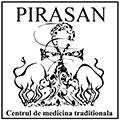A peripheral arterial disorder, obliterative arteritis is a progressive narrowing of the arteries in the lower limbs, which prevents blood circulation to the irrigated tissues (ischemia) and generates necrosis of the respective tissues in time. Occlusion of the circulation causes intense pains, accompanied by intermittent claudication (muscle cramps) in calves, thighs or buttocks.
Obliterative arteritis has a stealthy painless onset. As it develops, there are pains occurring under strain and later even in repose. Intensity of pains and discomfort vary with the muscle group where arterial occlusion is located. In advanced stages, there can also be noticed sensitive and motor disorders such as: numbness and tingling in the affected limb, coldness, change in skin color, paralysis and altered peripheral pulse (because of ischemic nervous branches in the obstructed area).
The ischemic process and the trophic disorders bias ulcerations, infections and gangrene. In such cases, there is a risk to amputate the affected limb in order to save the patient’s life.
The most frequent cause of occlusive arterial disease is arteriosclerosis, an arterial disease characterized by lipid depositions on the arterial walls, narrowed arterial diameter and obstruction of the arteries in the body. For instance, obstruction of the coronary arteries causes angina pectoris and myocardial infarction; that of carotids causes cerebral hypoxia or vascular cerebral accident. Diabetes mellitus, obesity, dyslipidemia, hypertension are also diseases threatening to develop occlusive arterial disease. From the perspective of Tibetan traditional medicine, obliterative arteritis is biased by a disorder in the ratio matter-energy at blood level, by an excess of cell residues (dead cells) in circulation, by variations of immunity (hyper-immunity, hypo-immunity) caused by dysfunctions of the adrenals and of the thyroid; of the liver, spleen and pancreas.
Treatment
In the traditional medicine, treatment of obliterative arteritis involves regulation of the dysfunctional organs’ activity. At the same time, a massive energy flow must be pumped into the blood and into the arterial walls. Moreover, the level of oxygen, too, is increased in blood. By the action of the oxygen, the fats and the deposits are burnt that obstruct the arteries. The energy liquefies the deposits and supports the fat-burning process in order to eliminate them from the body. The lesions caused by severed blood circulation will be recovered once the blood circuit is normalized. It will also be done by boosting the processes of tissular recovery.

